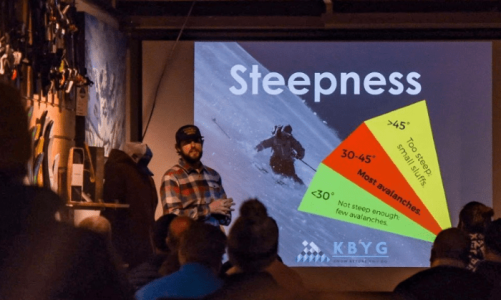The new Blizzard Sheeva 10, still a fan-favorite?
With a lot of familiar faces on the ski shop walls coming up next season, we were stoked when we heard Blizzard was revamping the Rustler/Sheeva line. This collection of freeride skis shook things up when they first hit the scene back in 2018. Now, after years in production, Blizzard applied new tech and modern design into these new skis to improve the ride, without losing that flavor we’ve come to love. So how did they do? We break it down in our Blizzard Sheeva 10 Review.
The Spark Notes version? The Blizzard Sheeva 10 is a quick, energetic, and confidence inspiring ski that a lot of skiers will get along with.

Blizzard Sheeva 10 Review: Field Notes
The Blizzard Sheeva 10 sits in the middle of the Sheeva family at 102mm underfoot. The Sheeva 9 (which features more metal) supports better firm snow performance at 96mm underfoot, and the Sheeva 11 is our powder queen at 112mm (with less metal). The whole Sheeva family received the same construction and shape updates this year. The main changes include a refined rocker profile to increase edge hold on firm snow, their new freeride True Blend woodcore, and a new partial metal shape called Flux Form.
The True Blend woodcore uses strips of different wood types throughout the core. With softer wood at the tips and tails and stiffer wood underfoot, Blizzard says these skis provide the perfect balance of power and forgiveness. We’ve seen True Blend in their other all-mountain models like the Black Pearl and the Brahma series, which remain hugely popular. So while we’re just getting this new “freeride” True Blend, we know the concept works.
The new Flux Form metal is perhaps the most interesting piece here. Rather than metal concentrated underfoot and in the centers of your tips and tails, metal is now focused along the edges of the ski like a frame. They taper as they move into the tip, but stay the same thickness in the tails. Both Matt and I noticed this new stiffer tail throughout testing. Another key note, the metal runs nearly the full length of the ski, to help the skis stay predictable. The new Blizzard Sheeva shares the same metal frame as the men’s Rustler, with the exception of a “W.S.D.” fiberglass plate underfoot, rather than metal.

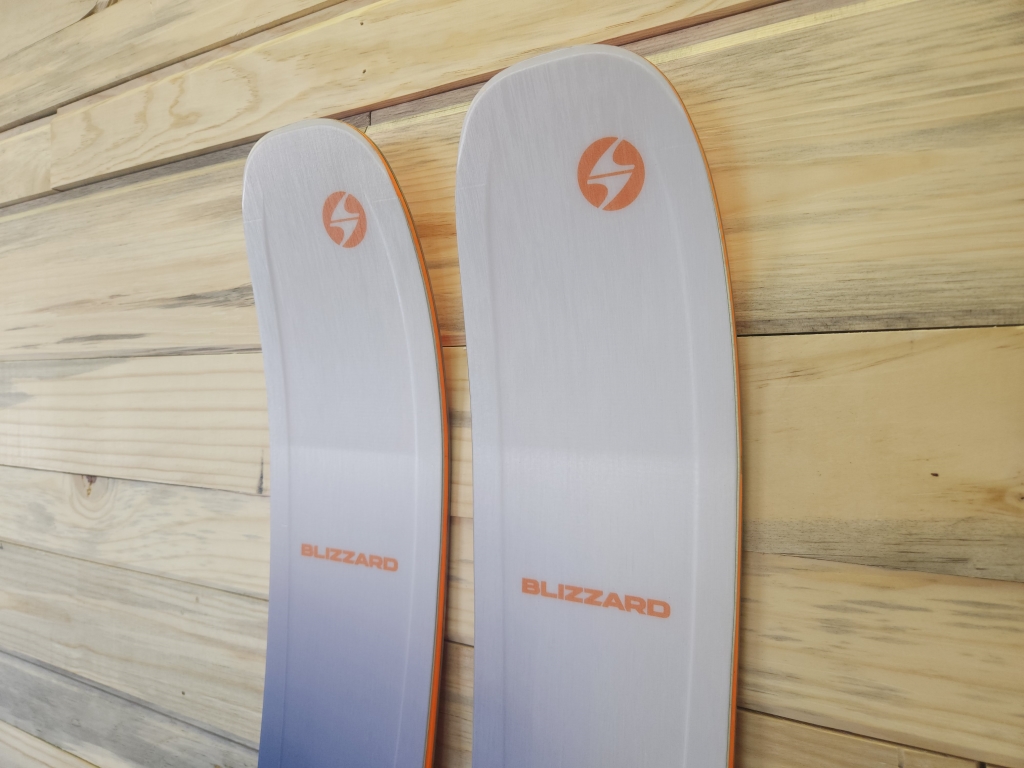
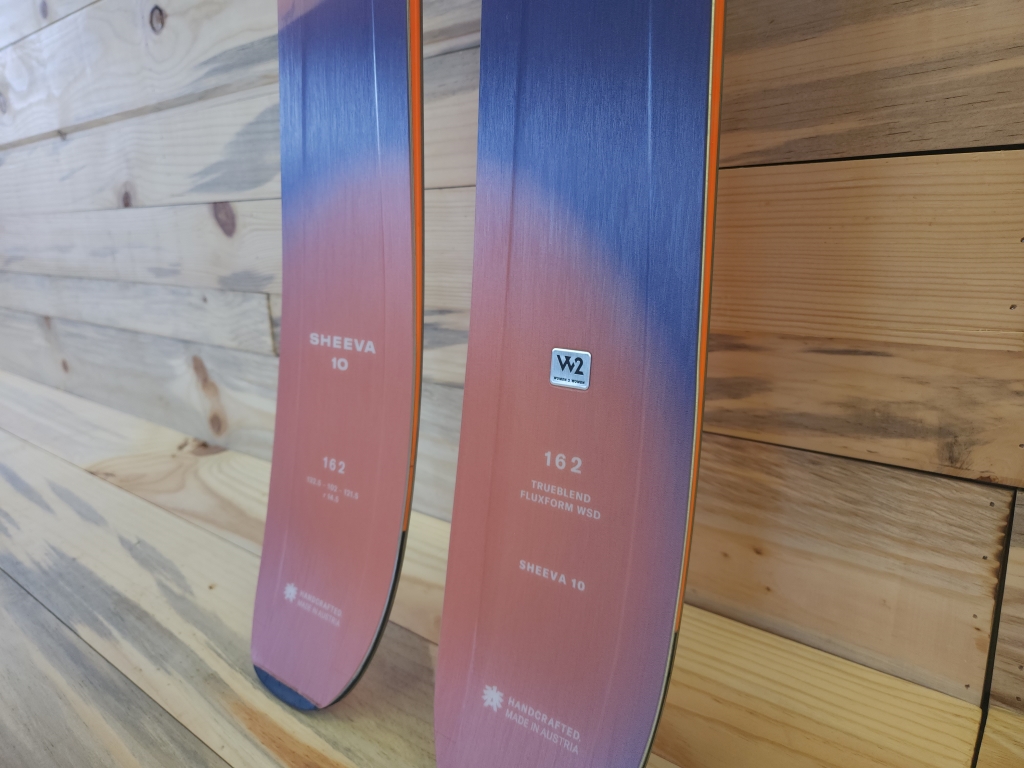
Tester and Sizing Notes:
I’m 5’8”, 130lbs, and generally like skis in the mid-170s. I spent quite a lot of time on the old Sheeva 10 in a 172cm, and always found that size to feel comfortable. My preferred length on the new Sheeva is 174cm, but I also spent some time on the 168cm to fully flush out this Blizzard Sheeva 10 review. While I appreciated the ability to whip the short ski around more quickly in tight Crested Butte chutes, I greatly preferred the stability of the longer length all around the mountain, especially on firm snow. I think to balance the women’s specific plate underfoot, my relatively aggressive ski style benefited from the longer length. That said, skiing the 174cm Rustler and Sheeva back to back, I liked the energy of the Sheeva a bit more. More on that below.
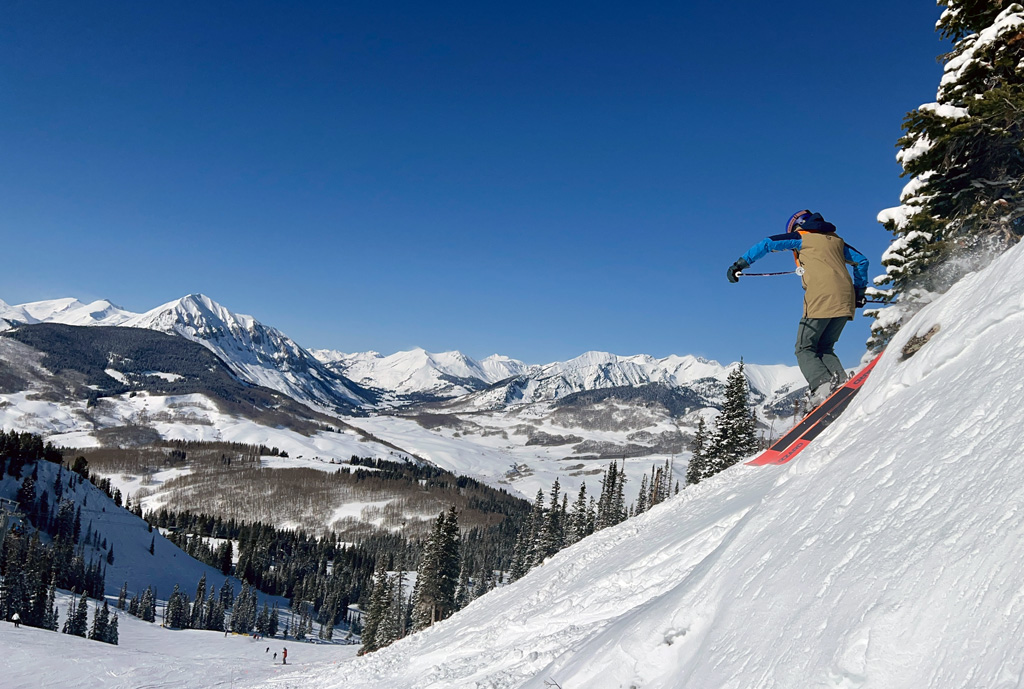
Groomers
Even though this isn’t a carving ski, in the “around 100mm” all-mountain category, we like versatility. The new Blizzard Sheeva 10 definitely delivers here on firm snow and groomer hot laps. I think it’s a significant step up in performance compared to the older model. The tapered Flux Form metal allows both the tips and tails to feel more engaged while carving. The tweaked rocker profile and elongated effective edge also help get that edge to bite more securely. Ultimately, these tweaks step up the confidence inspiring feel when this ski is on edge and let you push a bit harder and faster.
I think the biggest difference in terms of feel is just a more directional, locked-in ride while carving. The ski doesn’t wash out or skid out beneath you easily. This really rewards solid technique, and an aggressive skier will be happy to lay this ski over on edge confidently.
For beginners or early intermediates who might spend more time in the backseat, this might feel a bit more punishing. When it comes to sliding or washing out your turns, the Sheeva 10 would prefer you drive a bit harder. You certainly can get the ski sideways and take a lazier turn here and there, but there are easier going options that welcome a more casual stance for budding skiers.
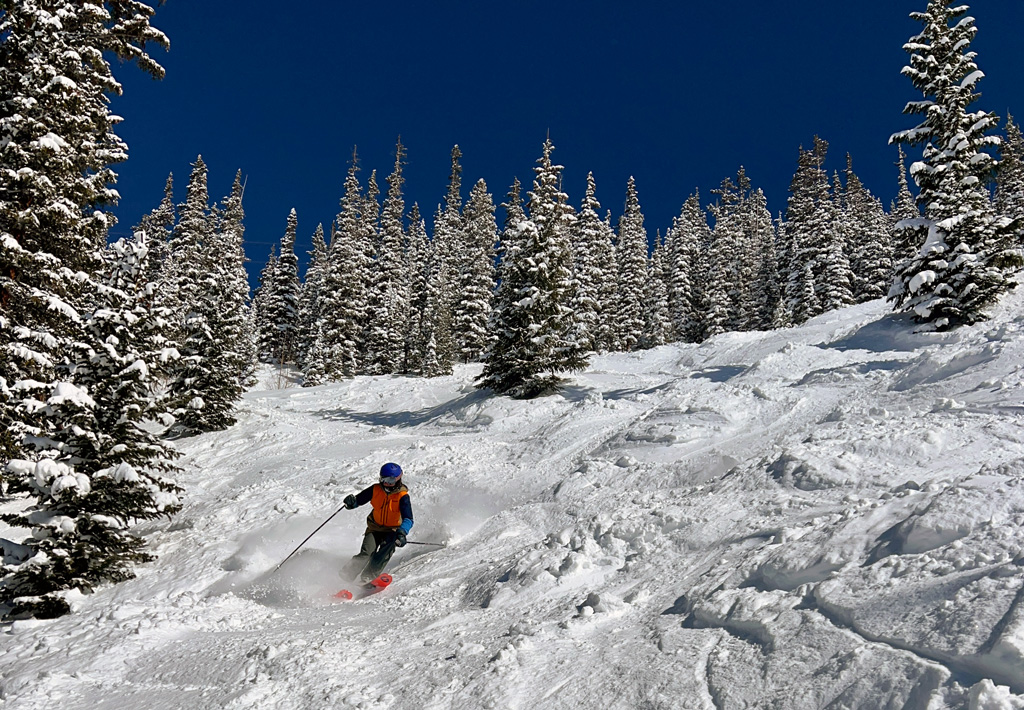
Bumps and Trees
The old Sheeva was a top recommendation for budding off-piste skiers for its intuitive and quick ride. And now? It’s still a great option for folks looking to progress off trail. The Sheeva feels quick and snappy underfoot, and is fast to respond as soon as you think about taking a turn. It has a lively ride that encourages a dynamic ski style. Bouncing between bump to bump, I felt like a bunny rabbit bopping down the hill. For me, this sets the Sheeva apart from other skis in this category. My first impressions of this ski off-trail was simply, “man, this is fun.”
I also appreciated the Sheeva’s bite on some of the steeps that were skied off. When you hit a scraped off area of snow between bumps, the Sheeva’s edge hold and metal frame really help you feel locked in. When linking turns between soft chop and some more “variable” snow, the Sheeva was predictable. I could trust all the turns I was making and linking things up felt intuitive. You can also still get the skis to slash sideways or pivot, but it takes a bit more input than something like the Nordica Unleashed 98.
I’d be remiss for not mentioning—the stiffer tail on the Sheeva can feel less forgiving in the bumps if you find yourself in the back seat. But I wouldn’t be afraid of this. I think it provides greater stability and helps level up performance on other parts of the mountain. Solid intermediates all the way up to experts can appreciate this I think. But, for folks who are just starting to explore bumps and trees, there are more forgiving options out there.
Mixed Snow and Powder
I was lucky enough to spend my first day on the Sheeva in some seriously soft snow at Vail. Like the predecessor, the Sheeva 10 feels surfy and floaty in deeper snow. For the size, the Sheeva provides plenty of stability and floatation, and the increased tip splay helps get you on top of the snow quickly. The awesome energy in the ski translates well to powder, and gives you a really fun ride through deeper snow. Not to mention, wide planks are fun to powder surf but can feel bulky after things are skied out. The Sheeva 10 offers great powder performance in a more nimble package. If you were looking for a one-ski quiver to tackle everything, the Sheeva 10 would do you right.
The new metal frame in the ski is very noticeable in chop. With the metal running through the tips of the ski, I found the Sheeva tracked better through choppy snow. The older, softer tips on the Sheeva lent themselves to easy turn initiation, but could sometimes get deflected in chop. I think the new metal frame does a great job of stabilizing the ski in mixed snow. It helps you stick to your line better and smooths out challenging snow conditions. I still think the Sheeva prefers a pilot who likes a more dynamic, quick turn style. That said, the ride is smooth and confidence-inspiring to take faster turns through variable snow, and much more predictable.
On another note, I did get to spend some time on the Sheeva 11 during this soft snow day, and it was equally as fun. The fiberglass plate underfoot really helps keep the ski feeling lively and responsive despite the wider waist width. I think for many freeriding ladies, the Sheeva 11 might be an excellent pick for a versatile powder ski that isn’t so wide it feels cumbersome.
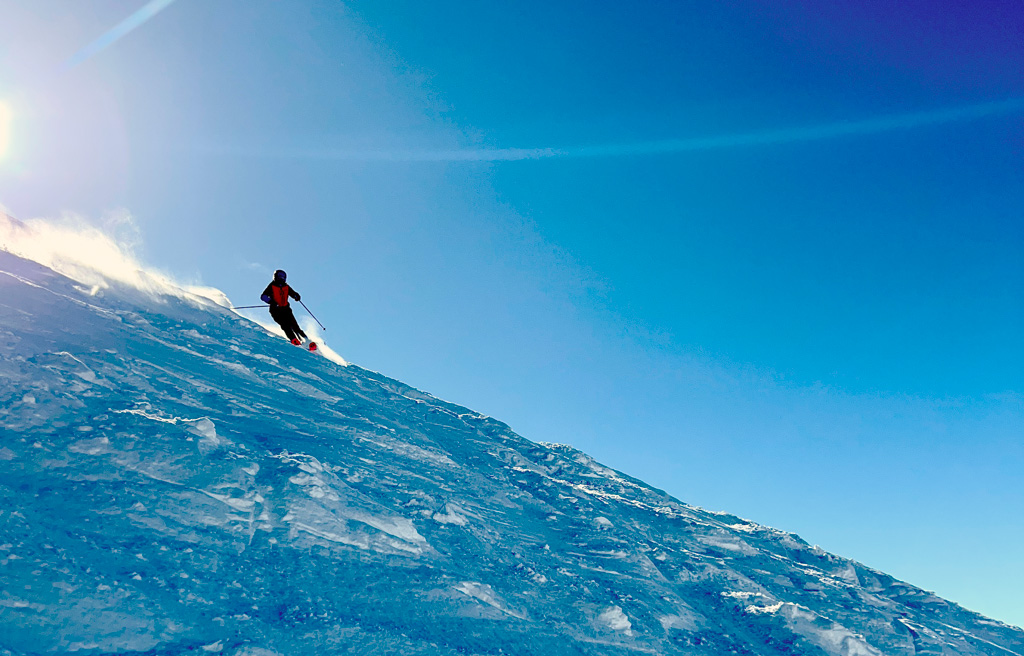
Downside
I think the Sheeva 10 hits a sweet spot for a lot of skiers, and while the new construction makes the ski feel significantly more stable, the ski doesn’t quite feel remarkably “damp”. Damp is a gross-sounding ski lingo term we like to use to describe really smooth riding skis that feel glued to the snow. A ski can be stable and feel secure on edge, but not necessarily “shock absorbent”. When I think of damp skis, I think of skis that significantly quiet the vibrations from riding over snow, like suspension on a mountain bike. The Rossignol Rallybird 104 Ti and Nordica Santa Ana 104 Free come to mind as skis that do the heavy lifting to keep the ride feeling smooth. That said, the Sheeva certainly feels more energetic and quicker underfoot than those skis.
There are also skis that are more willing to slash and pivot than the Sheeva 10. Thinking of the Icelantic Nia Pro or Faction Mana 2X, those skis are more than happy to get sideways. The Sheeva can do that, but it takes more input. Again, I don’t think this is a downside at all (as you get better firm snow edge hold), but if you fall on the extremely playful side of the spectrum and like to approach lines with more pivots and drifts, you might feel like you’re fighting the Sheeva’s instincts a little. It all depends on what you’re looking for.
Skiing fast on firm snow still left me wishing for more platform underneath me on the 168cm. Blizzard says the updated construction allows the ski to ride more “true to size”. This might be true on the Rustler, but I think the W.S.D platform on the Sheeva prevented things from feeling super planted in the shorter length. Charging lady rippers may be interested in sizing up for greater stability (as you might already do on rockered freeride skis). Consider looking at the men’s Rustler, if you know you like a planted, heavy metal ride.
Blizzard Sheeva 10 Review: The Bottom Line
From my experience, I thought the new Blizzard Sheeva 10 does a very good job of balancing a lively ride with on-snow stability. Not an easy task! Charge-y skiers who value a lively and fun ride will appreciate the Sheeva’s ability to do both. Progressing intermediates and advanced skiers will love the quickness and confidence-inspiring feel to push things a little harder. Especially folks who might find themselves navigating firm snow sections around the mountain. I know for my personal skiing—dealing with terrain that is fairly skied out and scraped off after storms—having something with a bit of edge really helps boost the confidence in my riding and encourages me to tackle lines with more speed and fluidity.
Overall, the Sheeva brings quick turn initiations and playful energy, but a locked-in feel on firm snow. The ski tracks better and deflects less in choppy snow than older versions, and carves really well for the waist width. What more could you ask for?

